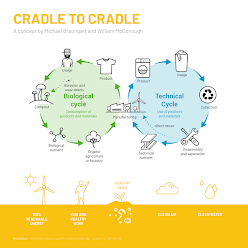Culture and Sustainable Design
What impact does culture have on sustainable design? This question was posed in our last debate seminar and it raised interesting perspectives across the class. The main discussion centered around how our culture in the US must change in order for us to become a more sustainable society. We as Americans are set in our ways that comfort and if it's broken, just buy a new one mentality. These unsustainable ways of thinking are one of the determents to our environment. In previous history classes we spoke to a reading that spoke to a "Cradle to Grave" situation where once an item is deemed broken, it is sent to a landfill. However, prior to our human demand domination, people in earlier times made use of an item until it was absolutely unusable and even then was stripped down to be used for something else. Then, we were in a time of resourcefulness with the things we had, but now, we lack appreciation for our instant on-demand products. This can relate to the architecture world as well when it comes to designing buildings to be adaptable or using materials that can be reworked for future uses. In our design world, tearing it down and starting over is what everyone wants to do, but being able to repurpose the old into the new is how we transition into more sustainable design practices.
In terms of comfortability and sustainable design, we talk all the time about how those in Europe have a level of comfortability where they do not need air conditioning in their homes 24/7. The architecture in those cities is designed to allow for airflow and shading in the summers and more openings to accommodate for the winter. Opening up a window for fresh, cool air is common in Europe, but in the US, in order to be comfortable, an AC unit must be present. We are conditioned to think that these are necessities when in reality, we could certainly live without them. While these luxuries will always continue to exist, I do think we can transition from being super dependent on them and use our profession as architects to reintroduce sustainable strategies that achieve the same level of comfort, without adding to unsustainable practices.



The relationship between culture and sustainable design is an interesting and important topic. It's true that our current culture in the US is not conducive to sustainable practices, but we can work to change that. Repurposing old materials and designing buildings to be adaptable are great ways to transition to more sustainable design practices.
ReplyDelete